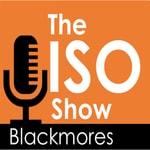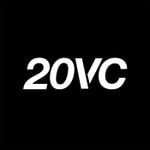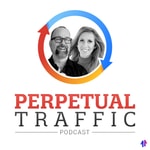The ISO Show – Details, episodes & analysis
Podcast details
Technical and general information from the podcast's RSS feed.

The ISO Show
Blackmores UK
Frequency: 1 episode/11d. Total Eps: 200

Recent rankings
Latest chart positions across Apple Podcasts and Spotify rankings.
Apple Podcasts
🇬🇧 Great Britain - management
25/07/2025#92🇬🇧 Great Britain - management
14/07/2025#73🇬🇧 Great Britain - management
28/06/2025#94🇩🇪 Germany - management
05/06/2025#86🇬🇧 Great Britain - management
10/05/2025#63🇫🇷 France - management
14/04/2025#85🇫🇷 France - management
13/04/2025#65🇫🇷 France - management
12/04/2025#57🇬🇧 Great Britain - management
22/02/2025#88🇨🇦 Canada - management
16/02/2025#70
Spotify
No recent rankings available
Shared links between episodes and podcasts
Links found in episode descriptions and other podcasts that share them.
See allRSS feed quality and score
Technical evaluation of the podcast's RSS feed quality and structure.
See allScore global : 43%
Publication history
Monthly episode publishing history over the past years.
#191 Understanding ESG Reporting – ISSB S2
Episode 191
mardi 17 septembre 2024 • Duration 20:58
Businesses are coming under increasing pressure to monitor, report and reduce their energy use and carbon emissions to meet net zero targets.
As a result, we’re seeing an increase in both mandatory and voluntary regulations that require carbon emissions reporting to verify your net zero claims.
In this episode, Mel continues the ESG Reporting Disclosures series by explaining what The International Sustainability Standards Board Climate-related Disclosures (ISSB S2) are, the emissions reporting and verification requirements and who qualifies for ISSB S2.
You’ll learn
· What is ISSB S2?
· What is the scope of ISSB S2
· What are the emissions reporting requirements for ISSB S2?
· Emissions verification requirements
· Who qualifies for ISSB S2?
Resources
· ISSB S2
In this episode, we talk about:
[00:30] Join the isologyhub – To get access to a suite of ISO related tools, training and templates. Simply head on over to isologyhub.com to either sign-up or book a demo.
[02:10] Episode summary: Over the course of September, Mel will be exploring the latest climate change regulations that may affect your organisation. In this episode she dives into The International Sustainability Standards Board Climate-related Disclosures (ISSB S2).
[03:20] What is ISSB S2? – The International Sustainability Standards Board Climate-related Disclosures (ISSB S2) is a new global standard that mandates entities to provide comprehensive information about climate-related risks and opportunities.
The ISSB S2 was issued by the International Sustainability Standards Board on the 26th of June 2023 and is effective for annual reporting periods beginning on or after the 1st January 2024. The new standard ensures that companies disclose physical and transition risks and their potential impact on the move towards a low carbon economy.
[04:20] Further learning with Carbonology: Carbonology have created a half-day course which walks you through all of the various carbon reporting disclosures and sustainability disclosure reporting requirements.
If you would like to learn more, get in touch with Carbonology.
[07:00] What does ‘Acute and Chronic Physical risks’ mean in the context of ISSB S2? Climate related physical risks are risks resulting from climate change that could be event driven, so an example of an acute physical risk could arise from weather related events like storms, floods and heatwaves, which are increasing in frequency.
These could have a knock-on effect to businesses, taking a heat wave as the example, you will need to consider:
· Can your IT systems and datacentres cope with it?
· Have you got resilience built in to your operations to be able to deal with that sort of disruption to your organisation?
Chronic physical risks arise from longer term shifts in climatic patterns, including changes in precipitation and temperature, which could lead to sea level rises and reduced water availability and changes in soil productivity.
These risks could carry a weighty financial burden either through direct damage to assets, or indirectly through supply chain disruption.
[09:35] Join the isologyhub and get access to limitless ISO resources – From as little as £99 a month, you can have unlimited access to hundreds of online training courses and achieve certification for completion of courses along the way, which will take you from learner to practitioner to leader in no time. Simply head on over to the isologyhub to sign-up or book a demo.
[11:43] What does ‘Transition risk’ mean in the context of ISSB S2? This is looking for a climate related transition plan, which should include targets, actions and resources for the transition towards a lower carbon economy.
This would include actions such as reducing greenhouse gas emissions.
[12:30] What is the scope of ISSB S2? This Standard applies to:
· climate-related risks to which the organisation is exposed, which are:
· climate-related physical risks; and (ii) climate-related transition risks; and
· climate-related opportunities available to the entity.
Climate-related risks and opportunities that could not reasonably be expected to affect an organisation’s prospects are outside the scope of this Standard.
· The Standard covers:-
· Governance
· Strategy
· Climate related risks and opportunities
· Business Model and Value Chain
· Financial position, financial performance and cash flows
· Climate resilience
· Risk Management
[14:10] What are the emissions reporting requirements for ISSB S2? - Under ISSB S2, companies are required to measure and disclose their greenhouse gas (GHG) emissions across three scopes:
· Scope 1 Emissions: Direct emissions from owned or controlled sources. For example, emissions from combustion in owned or controlled boilers, furnaces, vehicles, etc.
· Scope 2 Emissions: Indirect emissions from the generation of purchased energy. This includes emissions from the production of electricity, steam, heating, and cooling consumed by the company.
· Scope 3 greenhouse gas emissions: Indirect greenhouse gas emissions (not included in Scope 2 greenhouse gas emissions) that occur in the value chain of an entity, including both upstream and downstream emissions. Scope 3 greenhouse gas emissions include the Scope 3 categories in the Greenhouse Gas Protocol Corporate Value Chain (Scope 3) Accounting and Reporting Standard (2011).
[16:20] Emissions verification requirements - Under ISSB S2, companies are required to have their reported greenhouse gas (GHG) emissions data verified.
Verification can provide users of financial reports confidence that the information is complete, neutral and accurate.
Disclosure of inputs to Scope 3 greenhouse gas emissions needs to disclose information about the measurement approach, inputs and assumptions it uses.
[18:30] Who qualifies for ISSB S2? - ISSB S2 applies to all entities that are required by law, regulation, or administrative provision to prepare financial statements. This includes, but is not limited to:
· Publicly listed companies
· Large private companies
· Financial institutions such as banks and insurance companies
· State-owned enterprises
Entities are encouraged to adopt the ISSB S2 voluntarily, even if they are not mandated by law or regulation. Early adoption is permitted and encouraged to enhance transparency and accountability in climate-related disclosures.
If you would like some help with your carbon emissions reporting, please get in touch with Carbonology.
We’d love to hear your views and comments about the ISO Show, here’s how:
● Share the ISO Show on Twitter or Linkedin
● Leave an honest review on iTunes or Soundcloud. Your ratings and reviews really help and we read each one.
Subscribe to keep up-to-date with our latest episodes:
Stitcher | Spotify | YouTube |iTunes | Soundcloud | Mailing List
#190 Understanding ESG Reporting - Streamlined Energy and Carbon Reporting (SECR)
Episode 190
mardi 10 septembre 2024 • Duration 20:55
As the urgency to address the climate emergency heightens, businesses are coming under increasing pressure to monitor, report and reduce their energy use and carbon emissions to meet net zero targets.
As a result, there is an increase in regulations to ensure that companies are taking the climate emergency seriously and not pay lip service to climate action.
During September, we’ll be taking a look at a few of the latest regulations that may affect your organisation, including:
· SECR – Streamlined Energy and Carbon Reporting
· ISSB S2 - International Sustainability Standards Board Climate related disclosures
· CSRD - Corporate Sustainability Reporting Directive
· CSDDD - Corporate Sustainability Due Diligence Directive
In this episode, Mel Blackmore breaks down what Streamlined Energy and Carbon Reporting (SECR) is, its reporting requirements, it’s qualifiers and how it can work in tandem with other carbon management initiatives.
You’ll learn
· How do these regulations relate to ESG reporting?
· What is Streamlined Energy and Carbon Reporting?
· What are the SECR Emissions Reporting Requirements?
· Who qualifies for SECR?
· How can SECR work with other carbon management initiatives?
Resources
· SECR
In this episode, we talk about:
[00:30] Join the isologyhub – To get access to a suite of ISO related tools, training and templates. Simply head on over to isologyhub.com to either sign-up or book a demo.
[02:10] Episode summary: Over the course of September, Mel will be exploring the latest climate change regulations that may affect your organisation. In this episode she dives into Streamlined Energy and Carbon Reporting (SECR).
[03:20] How do these regulations relate to ESG reporting? – ESG requirements include a commitment to sustainability, and reducing your overall impact. All of these regulations contribute towards an organisations ESG reporting requirements, as they require tangible proof to back up your ESG claims.
They will require you to provide comprehensive emissions reporting, the level of detail of which will depend on the specific applicable regulation.
[04:05] Future content to look forward to: During September Mel will look at involuntary emissions reporting schemes, but in October she will be looking into the voluntary schemes that many are already adopting as part of their Stakeholder requirements.
This will include:
· CDP (Carbon Disclosure Project)
[05:50] What are the SECR Emissions Reporting Requirements?: SECR has been around since April 2019, and was originally introduced to replace the Carbon Reduction Commitment Scheme.
This is a mandatory scheme, so it is a legal requirement for those that meet it’s criteria. For those that are familiar with ESOS (The Energy Savings Opportunity Scheme), it functions in a very similar way.
This scheme isn’t solely focused on reporting energy usage and carbon emissions, it’s also looking for organisations to report on efficiency measures that are undertaken on an annual basis. Which is reflected in the financial reporting that you will also have to submit.
It’s important to note that SECR has specific requirements for the disclosure of greenhouse gas (GHG) emissions and energy consumption. Emission reporting requirements vary slightly between quoted companies and large unquoted companies and LLPs.
For quoted Companies:
· Global Scope 1 and 2 GHG emissions must be reported. Scope 3 emissions reporting is strongly recommended but voluntary.
For large unquoted companies and LLPs:
· UK based Scope 1 and Scope 2 emissions and associated energy consumption. Scope 3 emissions from the combustion of fuel in vehicles or equipment not owned by the company.
[10:10] Join the isologyhub and get access to limitless ISO resources – From as little as £99 a month, you can have unlimited access to hundreds of online training courses and achieve certification for completion of courses along the way, which will take you from learner to practitioner to leader in no time. Simply head on over to the isologyhub to sign-up or book a demo.
[12:05] Who qualifies for SECR?: All UK Quoted Companies: Any company that has shares listed on the UK Stock Exchange is required to comply with SECR.
Large Unquoted Companies and Large LLPs: These are companies and Limited Liability Partnerships (LLPs) that are not listed on the UK Stock Exchange but meet two or more of the following criteria:
· Turnover: More than £36 million per annum.
· Balance Sheet Total: More than £18 million.
· Number of Employees: 250 or more employees.
These criteria ensure that SECR framework targets large organisations that have a significant impact on the UK’s energy consumption and carbon emissions. By complying with SECR, these organisations can contribute significantly to the UK’s sustainability goals.
[14:10] When is the SECR disclosure made? SECR reporting must occur alongside financial reporting, being included within annual reports and Directors’ Reports, which are then filed with Companies House.
[14:30] The importance of Accurate SECR Reporting and Carbon Reduction - The reporting process can unlock valuable insights and opportunities for operational improvements, leading to enhanced energy efficiency and reduced carbon emissions over time.
Demonstrating your organisation’s commitment to energy efficiency and carbon reduction can enhance brand perception and foster positive relationships with stakeholders, including investors, clients, and regulators.
[16:05] Integrating SECR Reporting with Other Carbon Management Initiatives - You are missing a trick if you’re keeping your SECR reporting separate from the rest of your business activities. It should be included as a part of your sustainability umbrella, and can be invaluable if you’re going for other reporting requirements such as EcoVardis and CSRD.
There’s no need to reinvent the wheel if you already have something like an Environmental Management System in place, simply weave the additional requirements in with your usual annual maintenance. Established systems will already be adhered to across the business, meaning any new requirements will soon become business as usual.
You could incorporate this as part of your Net Zero strategy, or Carbon Reduction Plan if PPN 06/21 is one of your reporting requirements. You could also incorporate this into your supply chain emissions reporting.
If you would like some help with SECR, please get in touch with Carbonology.
We’d love to hear your views and comments about the ISO Show, here’s how:
● Share the ISO Show on Twitter or Linkedin
● Leave an honest review on iTunes or Soundcloud. Your ratings and reviews really help and we read each one.
Subscribe to keep up-to-date with our latest episodes:
Stitcher | Spotify | YouTube |iTunes | Soundcloud | Mailing List
#181 The Integral Role of Leadership within ISO
Episode 181
mercredi 3 juillet 2024 • Duration 25:10
ISO Standards provide a framework to help businesses manage various aspects of their activities. Whether that’s quality, risk, environmental or Information Security management, they provide invaluable guidance to establish an effective Management System.
One element that is key, no matter the Standard or subject area, is Leadership. Without this driving force, your Management System will not get the momentum it needs to truly benefit your way of working.
Today Ian Battersby will explain the integral role of leadership within the Implementation and maintenance of an ISO Management System, and how their active participation benefits the whole business.
You’ll learn
· What is Leadership?
· Where is Leadership referenced in ISO Standards?
· How do Leadership get involved with the Implementation and Management of ISO Standards?
· How does Leadership participation benefit the business?
Resources
In this episode, we talk about:
[00:30] Join the isologyhub – To get access to a suite of ISO related tools, training and templates. Simply head on over to isologyhub.com to either sign-up or book a demo.
[02:05] Episode summary: Ian will be discussing the role of Leadership within ISO Management Systems and how their active participation can benefit the business as a whole.
[02:30] What is Leadership? – Leadership is central to success in achieving any goal in business. It involves motivating a group of people toward a common pursuit, and it certainly isn’t straightforward without leadership believing in what it’s doing.
Without showing that belief, why would the workforce sit up and take note: ‘If it’s not important to you, why should it be to me?’
[03:30] Why should Leadership get involved? – The need for leadership has been recognised by Standards bodies, hence why it’s been made central to all Management System Standards.
For many years, Management Systems were separate from the day-to-day activities of running a business, often boiled down to just a person in a room with manuals, getting through certifications and earning a nice shiny badge.But this had little to no impact on the bottom line (be honest)!
But, a well-run Management System can have huge impacts and benefits on all types of organisation, and updated ISO standards aim to deliver that impact more readily, so leadership gets its own clause (Clause 5 – Leadership)
[05:25] Clause 5.1 Top management shall demonstrate leadership & commitment – This boils down to taking accountability for effectiveness of the system, but how do you do this?
Firstly, the system can only be effective if it is designed correctly, so leadership must ensure it fits with its context of the organisation, which is required in Clause 4.
There are ways of doing this, but we favour a SWOT and PESTLE. This is simply to ensure that those establishing context don’t do it in a vacuum, opening up the floor to get input from everyone effected by the Management System.
This is key because Senior Managers need active involvement to understand how the system works, its resource needs and its performance.
[07:25] Ensuring quality policy and objectives are established and compatible with context and strategic direction – The quality objectives must contribute to the business, so there's a role for senior managers to ensure that they are aligned and have a measurable contribution to the business.
What measures are included in your objectives which can demonstrably show that they affect the business in some way in a good way?
That's what senior management have to do to link quality objectives with strategic organisational business objectives.
[08:20] Ensuring integration into the organisation’s business processes – The quality objectives must contribute to the business, so there's a role for senior managers to ensure that they are aligned and have a measurable contribution to the business.
They must ensure integration into the organisations’ business processes, which in turn must be aligned with the context. They must also be relevant to the way the organisation runs and senior management needs to oversee a system which allows processes to do that.
[05:20] Promoting use of the process approach and risk-based thinking – This requires senior management to actually do some promotion – which is stipulated as ‘Shall Promote’. For those that don’t know, whenever the word ‘Shall’ is used in an ISO Standard, that essentially means you MUST do it.
In this instance, that means actually contributing the communications and raising of Management System Awareness.
Senior Management have to be involved in the process of describing to people what's important, why the standards are important and that risk and process are central to the organisations operations.
[09:35] Providing resources for the system – There’s a number of resources that Senior Management need to consider, including:
· People - Need to be enlisted to run a system and to operate the system throughout the organisation.
· Competence – You may need to invest in training if required.
· Expertise in the standard – Do you have expertise in-house on the Standard you’re certifying to? If not, you will have to invest in training or additional help from a third-party.
· Systems / Access and Documented Information – Do you have a place for hosting of documentation, workflows, forms? Further considerations are needed for required authorization and controlled access.
· Time – Implementing and maintaining a Management System is a big task, whether done by an individual or a team, they will need time to complete necessary Management System activities.
[10:30] Communicating the importance of an effective system and conforming to its requirements – Everyone looks up to Senior Management in regard to what their priorities are. It’s up to them to effectively communicate the importance of the Management System, it’s processes, their role in relation to the Management System and how to confirm with it’s requirements.
Key points to get across:
· How this system makes your workplace a better place.
· How it contributes to success of the organisation – I.e. happier customers, safer working conditions, ect
· How it can make their daily routine more fulfilling – i.e. having a complete picture of their place in the business, how they contribute to its success.
· What could nonconformity bring if people choose to step outside a management system? – I.e. With ISO 45001, nonconformance could risk someone getting injured.
[13:50] Engaging/directing/supporting persons to contribute to effectiveness of the system – Team managers should be harnessing the people at all levels to be able to fulfil the requirements of the Management System.
They should do that by providing clear expectations, which can be done via so communications and objective setting.
[14:30] Promoting improvement – Continual Improvement is absolutely key to every management system.
When something does go wrong, senior management must provide the resources for actively asking why things may have underperformed, so you can get to the cause of why it’s underperforming and put it right.
It’s also an opportunity to highlight when things have improved and celebrate those that contributed to that success.
[15:30] Join the isologyhub and get access to limitless ISO resources – From as little as £99 a month, you can have unlimited access to hundreds of online training courses and achieve certification for completion of courses along the way, which will take you from learner to practitioner to leader in no time. Simply head on over to the isologyhub to sign-up or book a demo.
[17:40] Supporting other management to demonstrate leadership in their areas – Leadership drives top to bottom. Everybody can have a role in leadership.
Roles and responsibilities are assigned by senior management, and this offers the opportunity for individuals to provide their own leadership in their specific areas.
[18:15] 5.2 Policy – The definition of Policy in ISO Standards is:
The overall intentions and direction of the organisation, expressed by senior management. A policy exists to govern the behaviour of an organisation and its employees in order to provide the best outcomes. It also provides the basis for the establishment of objectives. It does not explain how the policy is to be delivered through individual tasks. This may not be a detail for top management.
What’s the requirement?:
Top management must ensure its appropriate to the purpose and context of the organization and supports its strategic direction
It’s not simply just a piece of paper to sign once a year.
[19:25] 5.3 Organizational roles, responsibilities and authorities – What does the Standard say:
‘Top management shall ensure that responsibilities and authorities for relevant roles are assigned, communicated and understood within the organization’
What does this actually mean?:
· Ensuring the Management system conforms to your ISO Standard(s)
· Ensuring processes deliver desired results
· Performance reporting including opportunities for improvement
· Promotion of customer focus
· Ensuring integrity of the management system through change and continual improvement
[21:30] Leadership in practice – Ian recounts an experience where senior management did regular safety checks in an organisation he worked with previously.
Senior Management took an hour out each month to do a floor walk and actually talk to those on the ground floor to ask them about risk, equipment and just generally get a feel for how everything really worked.
In turn, they were challenged by their staff on safe working systems and this proper conversation led to better understanding on both parts. The staff got to see their Senior Management genuinely care about their work and well-being, and Senior Management got much needed insight into the actual day-to-day activities and see first hand where improvements could be made.
Those familiar with ISO 45001 will know that worker participation is a requirement of the Standard, but there’s no reason why you can’t apply this to other Standards.
If you’d like to book a demo for the isologyhub, simply contact us and we’d be happy to give you a tour.
We’d love to hear your views and comments about the ISO Show, here’s how:
● Share the ISO Show on Twitter or Linkedin
● Leave an honest review on iTunes or Soundcloud. Your ratings and reviews really help and we read each one.
Subscribe to keep up-to-date with our latest episodes:
Stitcher | Spotify | YouTube |iTunes | Soundcloud | Mailing List
The Seven Steps of Carbonology - Define
Episode 91
mardi 15 février 2022 • Duration 19:02
This episode is the first of our 7-part mini-series explaining our Carbonology service, a 7 step methodology to help companies become Carbon Neutral.
We’re joined by our resident Carbonologist David Algar to talk through the first step of the Carbonology process, Define.
David explains why the define stage is so important, what it entails, and how it works.
You’ll learn
- The seven steps in Carbonology.
- The importance of defining your carbon output.
- How to get a better understanding of your emissions.
- The recommended approach to define the subject and boundaries.
- How to write the introduction for your QES.
- How to become carbon neutral.
Resources
In this episode, we talk about:
[02:38] What the seven steps of Carbonology are.
[03:08] The first step to becoming carbon neutral.
[03:52] How the define stage in Carbonology works.
[04:42] What Carbonology boundaries in an organisation may look like.
[06:20] The importance of identifying the people involved with Carbonology work.
[07:00] The type of people that are normally involved with managing the Carbonology standards in a business.
[08:25] How organisations can determine the selection of the subject.
[09:49] Why it’s important to clearly define the subject and your boundaries.
[10:33] The recommended approach to define the subject and boundaries.
[12:17] The outcomes and deliverables that are provided through the define stage.
[13:35] Who the Qualifying Explanatory Statement has to be shared with.
If you need assistance with implementing ISO 14064, PAS 2060, or another standard – Contact us!
David Algar is also available for a free Carbonology consultation until the end of March – Book your slot Here
We’d love to hear your views and comments about the ISO Show, here’s how:
- Share the ISO Show on Twitter or Linkedin
- Leave an honest review on iTunes or Soundcloud. Your ratings and reviews really help and we read each one.
Subscribe to keep up-to-date with our latest episodes:
Stitcher | Spotify | YouTube |iTunes | Soundcloud
#90 What are the 4 costs of Health and Safety?
Episode 90
mardi 8 février 2022 • Duration 30:47
This episode we’re joined by the Founder of Slip Safety Services, and host of ‘The Safety and Risk Success Podcast' Christian Harris to talk about how Chris got into the business, the seriousness of slips, trips, and falls for both employers and employees, and the four main costs of Health and Safety.
Slips and trips cost UK employers approximately £512 million per year in lost production and other costs and are the leading cause of workplace injuries.
Christian explains how the UK court system works for criminal health and safety offences, why safety is such a key foundation of an organizations success, and how creating a better safety culture can increase a company’s profitability.
LinkedIn: https://www.linkedin.com/in/christian-harris-slip-safety/
You’ll learn
- How Christian got into the health and safety industry.
- The seriousness of Slips, Trips and Falls injuries to individuals.
- The cost of Slips, Trips, and Falls to employers.
- The average claims from Slips, Trips, and Falls.
- How creating a better safety culture can increase the profitability of a company.
- Why safety is such a key foundation of an organisations success.
- The 6-figure fines UK organisations have faced in recent years.
- How the UK court system works for criminal health and safety offences.
Resources
In this episode, we talk about:
[02:45] How Christian went from being a management consultant to becoming a safety specialist.
[03:51] The health and safety incident that changed Christian’s life.
[06:40] The psychological effect of living through an accident and how the incident has shaped the work Christian does.
[08:30] The four financial costs involved with Slips, Trips, and Falls.
[11:26] How the UK court system works for criminal health and safety offences.
[13:20] The criminal costs of accidents and how much money is claimed each year.
[15:13] The percentage of claims that get paid out.
[16:15] The difference between manual handling and Slips, Trips, and Falls.
[17:23] The positive benefits of creating a better safety culture.
[21:28] The slip safety scorecard and how you can access it.
If you need assistance with implementing ISO 45001, ISO 45003, or another standard – Contact us!
We’d love to hear your views and comments about the ISO Show, here’s how:
- Share the ISO Show on Twitter or Linkedin
- Leave an honest review on iTunes or Soundcloud. Your ratings and reviews really help and we read each one.
Subscribe to keep up-to-date with our latest episodes:
Stitcher | Spotify | YouTube |iTunes | Soundcloud
#89 How to Identify your Ideal client
Episode 89
mercredi 2 février 2022 • Duration 40:08
This episode, we’re joined by Transformational Marketing Strategist, Podcaster, and Speaker Jürgen Strauss to talk about ISO 9001, and how businesses can identify their ideal client.
All businesses need customers and they need to understand who their ideal client would be, as only then can you clearly identify what your ideal clients needs are.
Jürgen explains how to identify your ideal client, how using an empathy map can assist with this, and how this all influences your marketing strategy.
Contact Jürgen on LinkedIn: https://au.linkedin.com/in/jurgenstrauss
You’ll learn
- Why every business needs to have a model of their ideal client.
- How to understand who the ideal customer for your business is.
- Why mapping out your customer journey is so important.
- Ways you can build a relationship with your clients through an empathy map.
- When it’s right to turn business away and how to reject customers.
- Why customer journeys are important from a marketing perspective.
- Why it’s important to document every process and system in your business.
Resources
In this episode, we talk about:
[02:37] How Jürgen Strauss was involved in ISO 9001 implementation and how it helped him improve his business efficiency.
[04:20] How Jürgen developed his podcast based on the principles of ISO 9001.
[06:15] The global audience you can reach through podcasting.
[07:27] What makes a ‘dream customer’ and how Jürgen reaches them through his podcast.
[09:00] Why it’s important to have an ideal client for your business.
[12:23] How to identify who your ideal client is and what they’re needs are.
[14:23] What an Empathy map is and how the tool can help you locate your dream client.
[18:42] How an Empathy map helps you truly understand your customers.
[22:36] How to reject a client that you don’t want to work with.
[24:13] Why it’s important to identify what the customer journey is and how it relates to marketing.
[28:35] The circular nature of the customer journey.
[30:22] The importance of creating processes and systems, and common resistance points people have with creating an ideal client profile.
If you need assistance with implementing ISO 9001 or another standard – Contact us!
We’d love to hear your views and comments about the ISO Show, here’s how:
- Share the ISO Show on Twitter or Linkedin
- Leave an honest review on iTunes or Soundcloud. Your ratings and reviews really help and we read each one.
Subscribe to keep up-to-date with our latest episodes:
Stitcher | Spotify | YouTube |iTunes | Soundcloud
#88 ISO 50001 Steps to Success Part 3
Episode 88
mardi 18 janvier 2022 • Duration 30:31
This episode, we’re joined by Paul Robinson our Managing Consultant at Blackmores to talk about ISO 50001 – the Energy Management Standard.
Paul gives us some guidance and advice on how to audit and implement this standard effectively and how you can make improvements in your energy management.
We also talk about some common techniques to reduce energy consumption, how to increase a buildings energy efficiency, and how to monitor if equipment is being used in line with good practice.
You’ll learn
- How to make improvements in your energy management.
- How to implement the energy management standard ISO 50001.
- The purpose and benefits of carrying out internal audits.
- Common techniques to reduce energy consumption.
- How to increase a buildings energy efficiency.
- Why everyone should switch to LED lights.
Resources
In this episode, we talk about:
[02:25] The purpose and benefits of carrying out internal audits.
[03:31] Benefits data centres have had as a result of auditing.
[04:45] How an organization can set up a robust audit programme.
[07:23] The impact a building’s design has on its energy efficiency and how this can be improved.
[10:16] The importance of monitoring systems and the power of automation.
[11:59] How to know which maintenance companies to work with.
[13:13] How to know if equipment is being used with good practice.
[15:26] The benefits of raising opportunities of improvement to management.
[17:59] Common opportunities for businesses to improve their energy management.
[21:24] Evidence you expect to see when carrying out an ISO 50001 audit.
If you need assistance with implementing ISO 50001 or another standard – Contact us!
We’d love to hear your views and comments about the ISO Show, here’s how:
- Share the ISO Show on Twitter or Linkedin
- Leave an honest review on iTunes or Soundcloud. Your ratings and reviews really help and we read each one.
Subscribe to keep up-to-date with our latest episodes:
Stitcher | Spotify | YouTube |iTunes | Soundcloud
#87 Environmentally and Socially Sustainable Business Strategies
Episode 87
vendredi 17 décembre 2021 • Duration 57:44
We’re diving further into sustainability and best practices today as Mel is joined by Kit Oung who is a leading energy consultant with a wealth of experience spanning the last 25 years.
Kit is an energy and resource efficiency practitioner, consultant, trainer, and author on the subject of energy and resource efficiency; operational excellence, and triple bottom line.
Notable engagements include: designing regulations in the UK (energy and climate change regulations); Sharjah, UAE (mandatory Health and Safety awareness), and Singapore (waste regulation); drafting guidebooks on integrated management systems (ISO), energy efficiency (UNEP), ISO 50001 (ISO/UNIDO) and promoting of good governance in energy, environment, and health safety in India, Zambia, UAE, Qatar, Saudi Arabia, Oman, and Nigeria.
Kit is the author of Energy Management in Business: The Manager’s Guide to Maximising and Sustaining Energy Reduction (Gower, 2013), and coauthor of Best Practices and Case Studies for Industrial Energy Efficiency Improvement (UNEP, 2016). He also assisted in the technical review of ISO 50001: Energy management systems – A practical guide for SMEs (ISO, 2015).
Kit serves on IChemE’s Congress, IChemE’s Energy Community of Practice, IChemE’s annual sustainability awards judging panel, UNIDO’s global energy management leadership awards judging panel, and take part in developing National, Regional and International standards. He chaired ISO 14002-2 (current), ISO 50002 (current), PAS51215, EN16247-3, and participated in the development of ISO 14001 series, ISO 50001 series, and EN16247 series of standards.
Today, we’re looking at how to make energy sustainability strategies actionable, what the drivers for energy sustainability are, and how we can gain and maintain management commitment in sustainable energy practices. We’ll also have a sneak peak into Kit’s upcoming book: People, Planet, Profit: Environmentally and Socially Sustainable Business Strategies (Which you can pre-order! Link available under Resources)
You’ll learn
- The importance of leaders, managers and engineers all playing their parts in sustainability strategies.
- What needs to be in place for sustainability strategies to be actionable.
- How the drivers for energy sustainability differ in different geographical locations.
- The extent of the destruction of our forests and seas and why we aren't doing anything about it.
- Different low cost fuel saving technologies.
- How to gain and maintain management commitment in sustainable energy practices.
- How to break down your energy consumption and make it visible
- The psychological benefits of celebration.
Resources
- Pre-order: People, Planet, Profit: Environmentally and Socially Sustainable Business Strategies
- Start with Why
- Get in contact with Kit Oung
In this episode, we talk about:
[02:12] Kit’s experience in working with energy management and sustainable initiatives.
[05:48] Key aspects that need to be in place for a sustainability strategy to be actionable and have real influence on a company’s products and services.
[10:40] A case study of how British Airways has integrated sustainability into their business structure.
[15:15] The main drivers of sustainability practices in the Middle East.
[17:12] What inspired Kit to write his new book - People, Planet, Profit: Environmentally and Socially Sustainable Business Strategies
[21:20] Low cost technologies businesses can use to reduce their energy consumption.
[23:48] The three elements you need in an organisation to effectively control your energy consumption.
[25:40] How to gain and maintain management commitment.
[28:30] The importance of understanding every aspect of an organisation's processes and the hidden costs around waste materials.
[32:34] The importance of measuring consumption of resources and benchmarking.
[34:16] How to break down your energy consumption and make it visible.
[38:26] How external providers can help companies with the technical aspect of the data.
[40:48] How to break down implementation barriers in companies.
[47:03] The psychological benefits of celebration.
We’d love to hear your views and comments about the ISO Show, here’s how:
- Share the ISO Show on Twitter or Linkedin
- Leave an honest review on iTunes or Soundcloud. Your ratings and reviews really help and we read each one.
Subscribe to keep up-to-date with our latest episodes:
Stitcher | Spotify | YouTube |iTunes | Soundcloud
#86 What is ISO 32210 - Sustainable Finance?
Episode 86
mercredi 8 décembre 2021 • Duration 31:43
Today we’re joined by the Director of Morgan Green Advisory, Hayden Morgan.
Hayden is an independent consultant with a mission to enable a sustainable, lower-carbon future.
He has been pioneering sustainability within the finance sector for almost 25 years, and provides award-winning insights and solutions, focusing on transitioning to beneficial outcomes.
Today we talk about sustainable finance and the work Hayden is doing with leading experts from over 25 countries to develop the new global sustainability standard for financial organisations ISO 32210...
You’ll learn
- What sustainable finance is and how it works.
- The best way to get involved with the ISO 32210 standard.
- The need for a standardised label for sustainable infrastructure.
- The benefits of implementing the new ISO 32210 standard.
- When ISO 32210 will be available for organisations to implement.
- The rise of climate risk strategies in financial markets.
Resources
In this episode, we talk about:
[02:24] How Hayden got involved in working in global sustainability.
[04:05] The work Hayden’s been doing on the new sustainable finance standard.
[04:56] How you can get involved with the new ISO 32210 standard.
[06:48] Hayden’s involvement advising the world bank around the development of a label for sustainable infrastructure.
[10:42] The pilot projects taking part in a sustainable infrastructure label.
[11:51] What sustainable finance is.
[12:39] The principles of the ISO 32210 standard and how it complements other requirements.
[15:30] The implementation guidance for ISO 32210’s principles.
[17:09] The best practice resources that will be available to help people implement the standard.
[18:17] The benefits of implementing the ISO 32210 standard.
[22:16] The plans for the standard and the expected launch date for the ISO 32210 standard.
[23:41] The sustainable integration work and climate risk strategies Hayden works on at Morgan Green Advisory.
If you need assistance with implementing ISO 32210 or another standard – Contact us!
We’d love to hear your views and comments about the ISO Show, here’s how:
- Share the ISO Show on Twitter or Linkedin
- Leave an honest review on iTunes or Soundcloud. Your ratings and reviews really help and we read each one.
Subscribe to keep up-to-date with our latest episodes:
Stitcher | Spotify | YouTube |iTunes | Soundcloud
#85 ISO 50001 Steps to Success Part 2
Episode 85
jeudi 2 décembre 2021 • Duration 01:11:26
We’re joined again by Paul Robinson, Managing Consultant at Blackmores. Last week Paul summarised the importance of energy management and introduced us to ISO 50001. This week, he delves deeper into the individual clauses of the Standard to break down what’s required in a typical Energy Management System.
What you’ll learn:
- The main clauses and requirements of ISO 50001
- Examples of ISO 50001’s application in other Businesses based on Paul’s experience
What are the main clauses of ISO 50001?
ISO 50001 has been aligned with the Annex SL format since 2018 so that it may be more easily integrated with other ISO Standards. The clauses are as follows:
- Clauses 1, 2 and 3 – These are all explanatory clauses, starting with the scope, then Normative References and lastly Terms and Definitions.
- Clause 4 – Context of the Organisation: Here you would define the scope and boundaries of your energy management system and understanding the processes affected. This includes looking at your energy inputs and outputs. You’ll also address any energy issues that affect you and interested parties involved.
- Clause 5 – Leadership: This refers to Top Management commitment, which is necessary if you want your energy management system to be successful. They will need to provide resources required to implement an energy policy, and to define roles and responsibilities.
- Clause 6 – Planning: This is a central pillar behind every Energy Management System as it talks about strategic and tactical considerations. This includes high-level issues, the needs and expectations of interested parties and the risks and opportunities associated with them in an energy context.
This clause also includes an Energy Review, which will help you build a picture of your energy sources and current consumption. From that you can start setting your Objectives and Targets and actions going forward using energy baselines and energy performance indicators established from the Energy Review.
- Clause 7 – Support: This clause talks about provision of resources, competencies, awareness, communication and documented information required for energy management.
- Clause 8 – Operation: This is where operational controls are defined to help you manage your energy effectively. It also covers design and procurement, which means procuring of energy, consuming assets and having effective processes in place to ensure energy is a key consideration when making infrastructure changes.
- Clause 9 – Performance Evaluation: ISO 50001 is very data driven and clause 9 states the requirements for monitoring and measurement of your energy use, which will be used to demonstrate your improvement in energy efficiency. This clause also covers Internal Audits and Management Review to ensure the Management System is performing effectively.
- Clause 10 – Improvement: This clause talks about taking opportunities that drive continual improvement in the Management System, but also recognizing that sometimes things go wrong. It also addresses significant deviations and a structure to investigate and correct those deviations to keep the management system on track.
What can go wrong?:
Based on his experience, Paul highlighted some issues he’s seen in existing Management Systems:
- Not aligning an Energy Management system with Company Objectives
- Lack of financial resources
- Having the Management system built and run by only one person – This becomes a single point of failure
- Confusion in responding to energy deviations – lack of communication of a process to correct non-conformities
- Rushed creation – Energy Management Systems created in a short span of time may not be properly embedded into the business and can lead to the issues listed above.
That’s it from Paul this week! For further information on ISO 50001, visit our Standards page Here. We also have an ISO 50001 Handbook available to members of the isologyhub, sign up here to grab a copy.
If you’re just getting started with ISO, we do have a free ISO Blueprint available for download to help you to plan, create, launch and get certified to ISO Standards.
We’d love to hear your views and comments about the ISO Show, here’s how:
- Share the ISO Show on Twitter or Linkedin
- Leave an honest review on iTunes or Soundcloud. Your ratings and reviews really help and we read each one.
Subscribe to keep up-to-date with our latest episodes:
Stitcher | Spotify | YouTube |iTunes | Soundcloud









